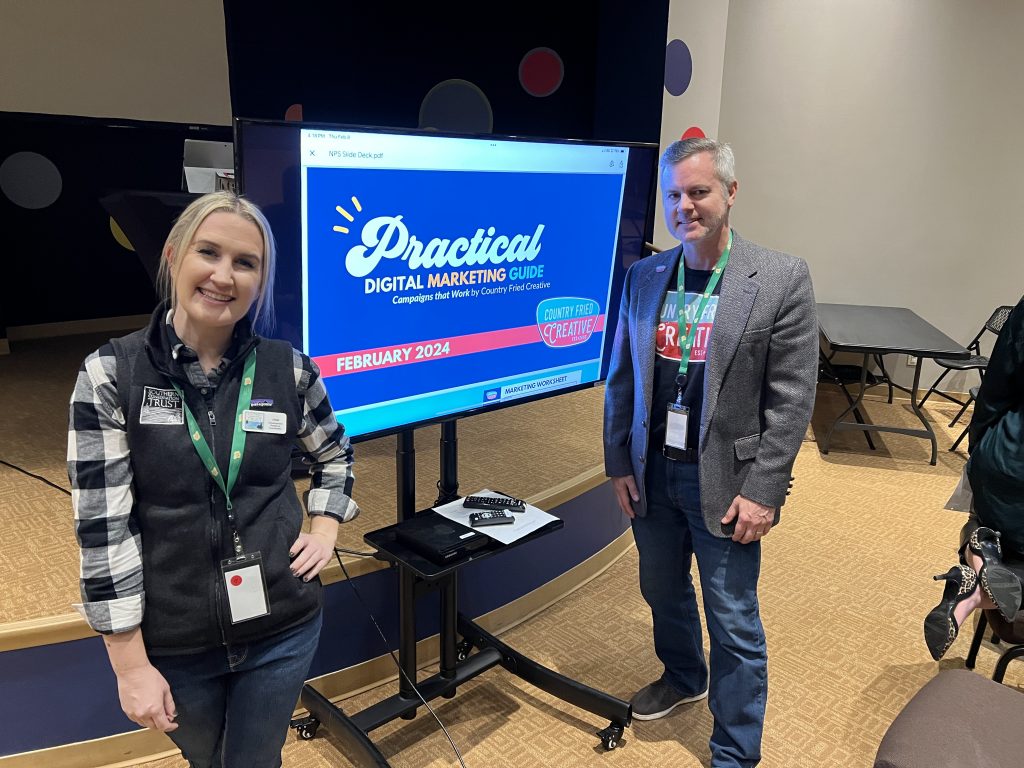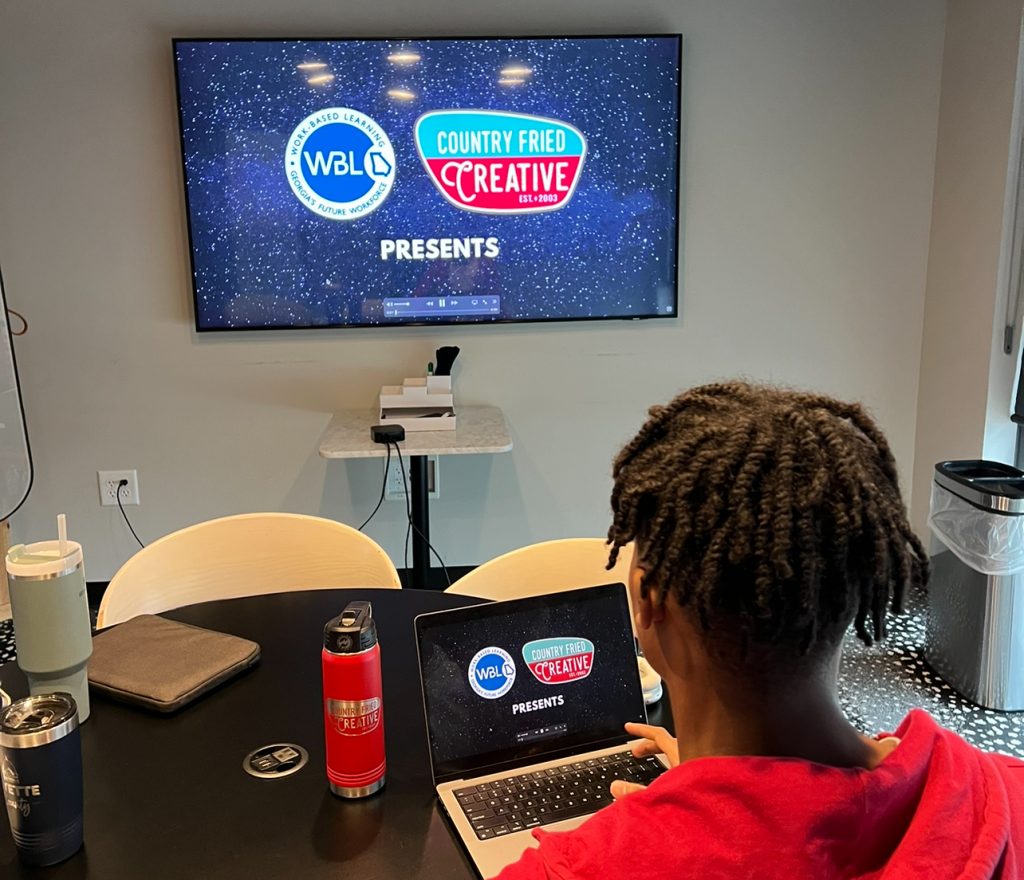Recently, my company had the pleasure of speaking about marketing at the third annual Coweta County Nonprofit Summit. After the presentation, one of the attendees approached me to ask some questions. She was a volunteer board member attending the conference to get information for her nonprofit but told me that her “real job” was operating a small business in Newnan. She had been struggling with marketing her business to get new customers and wondered what could be done. Instead of answering the question outright, our dialogue just kind of naturally developed into a chat about marketing mistakes that I had seen people (including myself) make over the years. I thought the dialogue we had might make for a good article.
What is marketing? Here’s the most straightforward definition I have:
Marketing = Promotion.
Typically, marketing is directed at promoting activities that lead to the exchange of money, such as the sales of products or services. If you’re a nonprofit, then marketing might be used to solicit donors and sponsors. I used the word “typically” on purpose because marketing doesn’t always involve a sale or donation. Marketing may be used to promote free community events, foster general awareness of an idea, or recruit volunteers. When I was in graduate school 30 years ago, I learned there was a Marketing Mix called the “Five P’s of Marketing” – Product (or Service), Place, Price, Promotion, and People. Some experts have expanded it to “Seven P’s,” including Packaging and Positioning. I’ve heard others refer to only “Four P’s.” Regardless of how many P’s are added to the mix, let’s just stick with “Promotion” for simplicity.

The author Joe Domaleski (on the right) with Southern Conservation Trust Community Relations Coordinator Josie Saunders at the 2024 Coweta Nonprofit Summit. Photo/Joe Domaleski
As a society, we need good marketing. It’s what allows us to find things of interest like household goods, restaurants, service providers, Churches, community activities, volunteer opportunities, entertainment options, and even community news. If you are a business owner or nonprofit leader, then you need marketing to create awareness so that people can find you. One of the reasons I started a marketing agency twenty years ago is so that I could help foster better community dialogue between businesses, nonprofits, and residents. This became especially important during COVID. As people were hunkered down at home in front of their computers, online marketing became a lifeline for both businesses and consumers so that people could see what was open.
The best forms of marketing are natural and relevant. No one likes creepy marketing that stalks you online. You can overdo marketing. It’s also true that most all businesses are marketing even when they think they aren’t. My all-time favorite phrase I sometimes hear from fellow business owners is, “I don’t believe in marketing. We’ve got more than enough business.” That’s wrong on so many levels. Do you have a sign outside your business? Do you have a logo, business cards, and letterhead? If so, then you’re marketing – but probably not enough.

The author promoting his business Country Fried Creative with signage at the 2024 Coweta Nonprofit Summit. Photo/Joe Domaleski
Now that we know what marketing is and why we need it, let’s examine ten of the most common marketing mistakes made by local, small business owners (and nonprofits). As a local business owner, I have made most of these mistakes myself.
- Marketing without a plan. This is the most common problem I see, and it’s still amazing to me that many organizations sort of stumble around with an outdated website, sporadic advertising, inconsistent branding, and no plan whatsoever. This wastes time and money. At a minimum, an organization needs to have a written plan to define their marketing target, goals, activities, budget, and performance measures. I’ve seen great one-page marketing plans, although most tend to have a little more detail. What I hear a lot of the time is, “We don’t want to be bothered with a plan. Just make us #1 on Google and get us leads.” You can’t do it without a plan.
- Getting sales confused with marketing. Marketing is not the same thing as sales. You can fight me on that one. We’ve established that marketing is promotion and it helps create the conditions for a sale. The sale happens when someone actually buys something, which could be in person or online. Many companies mistake the two terms and over rely on marketing to make up for bad sales practices. You need both marketing and sales. Great marketing helps create conditions for a sale, but it’s not the sale itself. In a previous article, I said that sales is the most important function of a business, and I stand by that statement, but sales is not marketing.
- Putting too much reliance on referrals. Make no mistake, referrals are often the best source of marketing for a small, local business. Even as a marketing agency, about 80% of our prospects come from referrals. However, referrals aren’t enough to sustain a business. Good marketing helps convert referrals into potential customers. Almost all referrals will look at a website to gain insight into a company’s quality, authenticity, and relevance. What happens when the referrals stop coming in? Businesses should promote themselves using a wide range of marketing channels such as social media, newsletters, advertisements, and signage to name a few. Don’t put all of your eggs in one basket.
- Underestimating the importance of quality. Your target market will form an immediate impression about your organization based on the quality of what they see. Avoid the temptation to scrimp with AI-generated written content, poor quality images, pixelated logos, and outdated information. When I see things like “Free website by Wix” in a website footer or “Get your free 50 business cards by Vistaprint” printed on the back of business cards, then that tells me that the business is not serious enough to invest in themselves. You only get one first impression. Strive for quality so that you stand out in a noisy world.
- Failing to keep online information accurate. I know this is a pet peeve for anyone trying to find information online. It’s essential to keep your contact information, hours of operation, location, and company information consistent on your website, social media, business directory listings, and signage. People won’t come to your restaurant if the website says you’re open at 7am for breakfast, but your Facebook page says 8am. Make it a regular habit to audit your online “points of presence” to make sure they’re consistent.
- Missing out on opportunities for free marketing. Yes, there really are ways to market inexpensively and sometimes free. Asking people to refer your business, claiming your Google business listing, volunteering in the community, and creating ways for people to find you are all great ways for marketing on a shoestring budget. Marketing doesn’t have to be expensive, but it does have to be consistent. Networking in the community is one of the best free ways to market your business, and it’s how I built my company.
- Over relying on free/cheap marketing. Free is good, but it’s not enough. There’s no getting around investing money and resources to make sure your business has customers. Set a monthly budget and invest a fixed amount each month to promote your business. From time to time, you may want to spend a little more for special events and promotions, but consistently spend and see what works best for you. You’ll be invisible if you don’t spend something on marketing because your competitors will.
- Avoiding advertising and paid promotions. One of the most effective ways to get your message out to your target market is to invest in advertising, especially digital advertising. With digital advertising, you can be very specific about who sees your message and how much you want to spend on it. Better yet, you can actually track how many people take action, so you can measure the return on your investment. That’s harder to do with traditional print advertising. The key to advertising is consistency and relevance. Advertising in this online newspaper is a great way to reach a local audience.
- Neglecting brand consistency. Don’t be that business or nonprofit that has different versions of your logo on your signs, shirts, website, and print material. Quality is important, but don’t fall into the trap of merely “elevating your brand” by prioritizing style over substance. Yes, style is important, but make sure it’s sustainable with consistency. Inconsistent branding will confuse your target market. Consistency in high-quality visuals, tone, and messaging reinforces brand recognition and loyalty.
- Ignoring analytics and attribution. It’s still amazing to me that many business leaders have no idea how many visitors they have on their website or what their marketing return on investment is. You can’t manage what you can’t measure. “Well, they said they heard about me online” is not analytics. Use analytics to track the effectiveness of your marketing activities so that you can focus on what works and eliminate those activities that aren’t working.

Intern Zavion Green, a senior at Sandy Creek HS, works on a promotional video for the Fayette Schools Work-based Learning program and Country Fried Creative. Photo/Joe Domaleski
We all need marketing! If you’re a business owner, you need marketing to help promote your products and services to the right target audience. If you’re a nonprofit leader, you need marketing to solicit donations and garner support for your cause. If you’re a consumer, you need marketing to help find what you’re looking for efficiently and effectively—and occasionally discover things you didn’t know you needed. Marketing is both an art and a science that promotes your organization in a creative and methodical manner. Be deliberate with your marketing activities, ensuring high-quality and consistent messaging that is both measurable and adjustable for optimal impact.
I look forward to seeing how your marketing efforts make an impact in our community.
[Joe Domaleski, a Fayette County resident for 25 years, is the owner of Country Fried Creative – an award-winning digital marketing agency located in Peachtree City. His company was the Fayette Chamber’s 2021 Small Business of the Year. Joe is a husband, father of three grown children, and proud Army veteran. He has an MBA from Georgia State University and enjoys sharing his perspectives drawing from thirty years of business leadership experience. Sign up for the Country Fried Creative newsletter to get marketing and business articles directly in your inbox. ]
